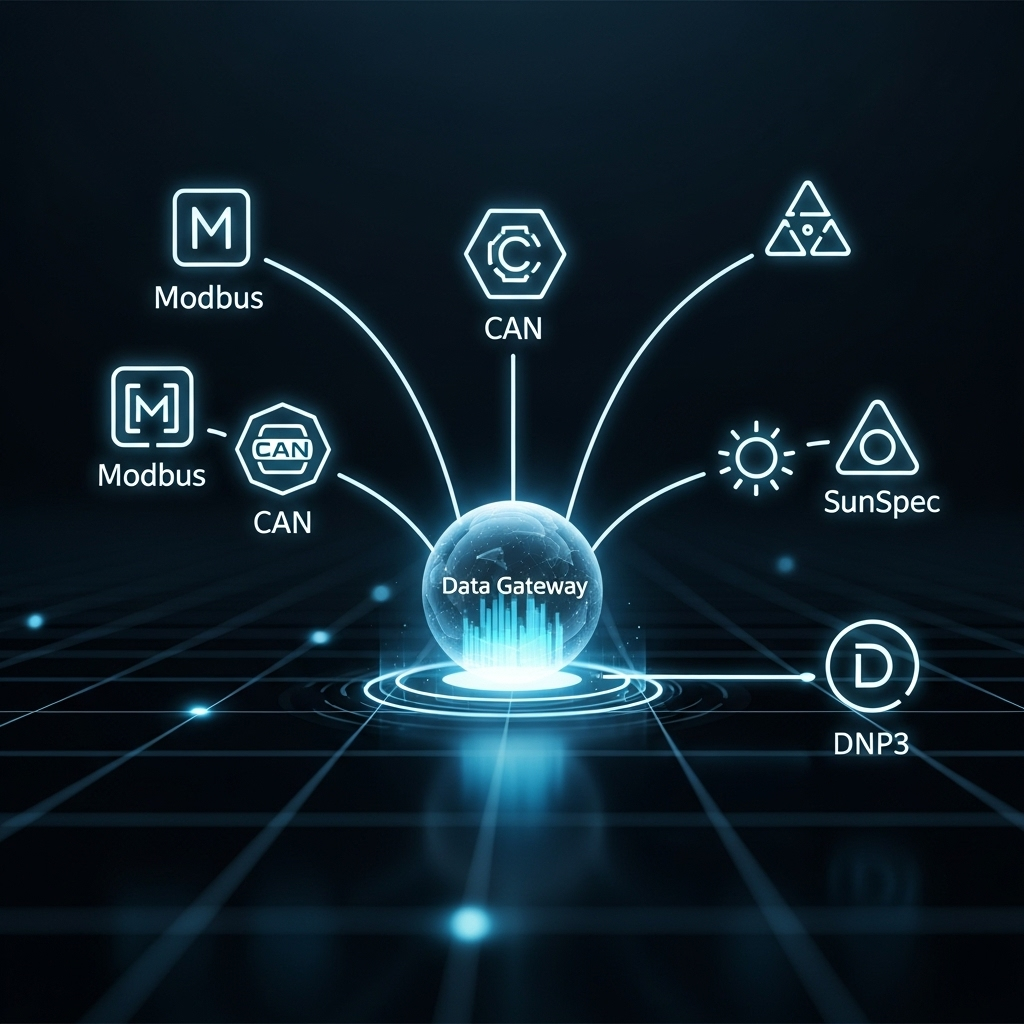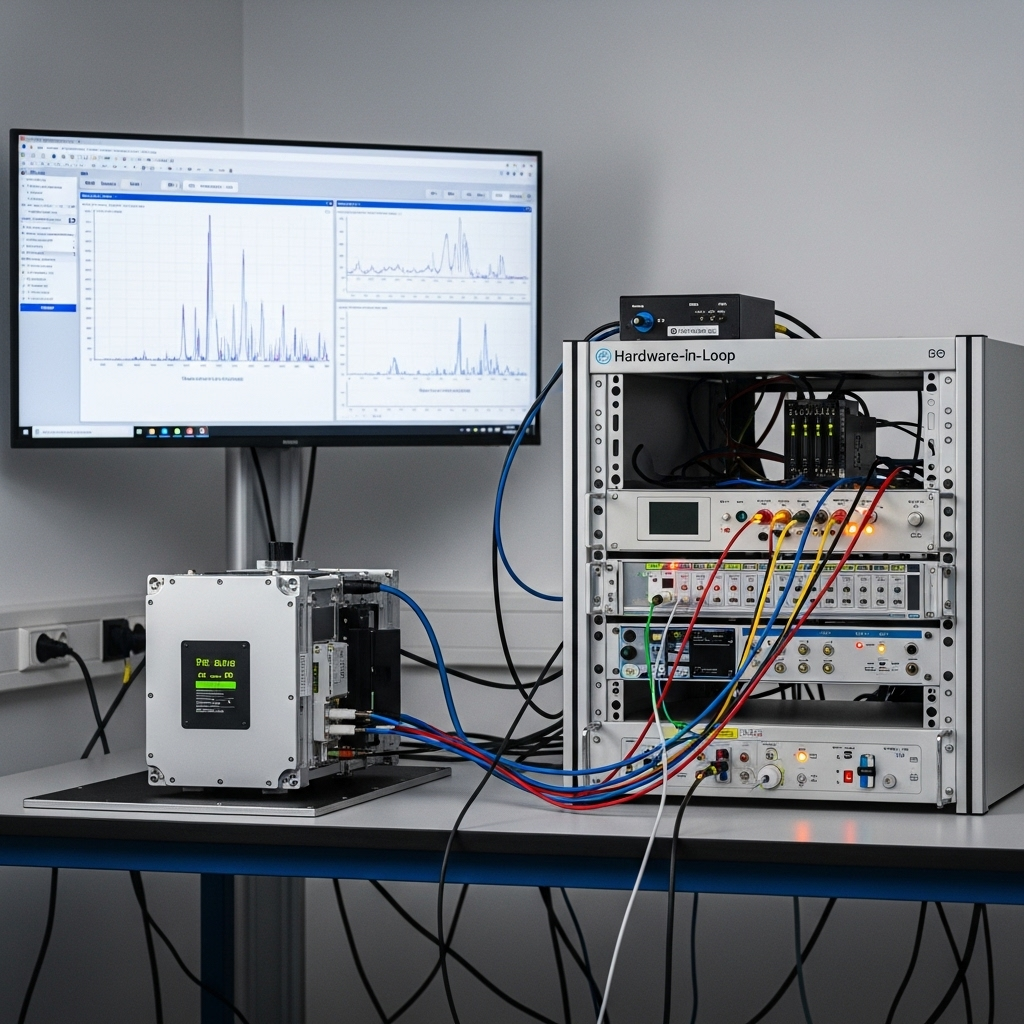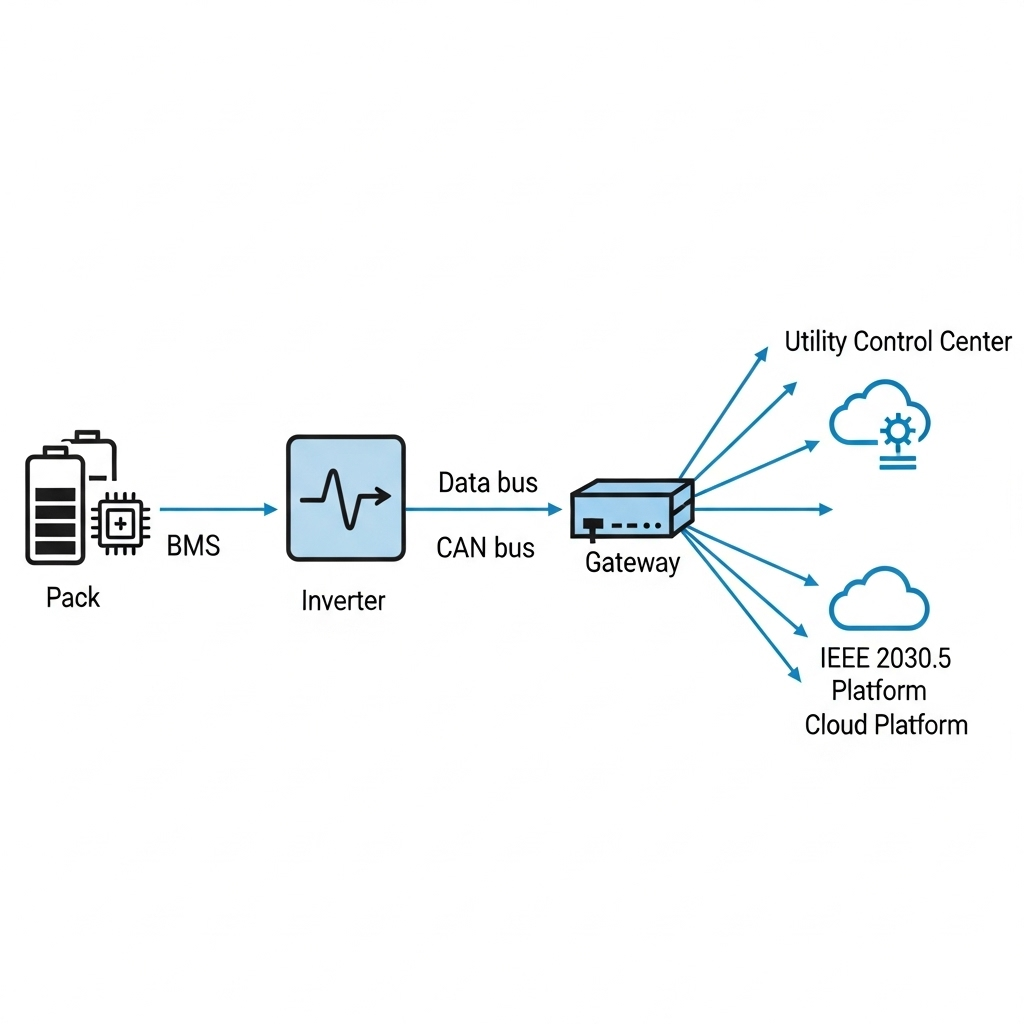The rapid expansion of Distributed Energy Resources (DERs), such as solar panels and battery storage systems, is fundamentally reshaping our electrical grid. This growth introduces immense potential but also significant challenges. A primary hurdle is the lack of a common communication language between these diverse assets and the Distribution System Operators (DSOs) that manage the grid. This fragmentation can lead to integration delays, operational inefficiencies, and grid instability. A clear roadmap for protocol harmonisation is emerging, with 2025 as a key milestone for creating a more unified, intelligent, and secure energy network.
The Current State of DER Communication: A Fragmented Landscape
Today, DER manufacturers and system integrators face a complex web of communication requirements. Different utilities and regions often demand different protocols, creating a compliance puzzle that slows down deployment and increases costs. Understanding this landscape is the first step toward appreciating the need for standardization.
The Protocol Puzzle
At the local device level, protocols like Modbus and CAN bus are common for communication between components, such as an inverter and a battery management system (BMS). They are effective for internal system control. However, for communicating with the wider grid, DSOs rely on different protocols, including DNP3, IEC 61850, and increasingly, IEEE 2030.5. As the International Renewable Energy Agency (IRENA) points out in its Grid Codes for Renewable Powered Systems report, many jurisdictions must support a variety of existing communication systems, which complicates the mandate of a single, universal standard.
Why Harmonisation is Critical for Grid Stability
A fragmented protocol environment poses risks. Without standardized communication, DSOs have limited visibility and control over the thousands of DERs connected to their networks. This makes it difficult to manage grid voltage, frequency, and overall stability, especially as the penetration of variable renewables increases. Harmonisation is the solution. It simplifies the integration process, reduces development and compliance costs for manufacturers, and provides DSOs with the tools they need to maintain a reliable and resilient grid.
The 2025 Roadmap: Key Protocols and Standards
The path toward interoperability is becoming clearer. Industry stakeholders and standards bodies are converging on a multi-layered approach that leverages the strengths of different protocols. The goal is not to have one protocol to rule them all, but to create a logical framework where different protocols serve specific functions within a cohesive architecture.
IEEE 2030.5 as the Emerging Backbone
IEEE 2030.5 is rapidly gaining acceptance as the primary protocol for communication between DERs and utilities. As an application-layer protocol that runs over standard internet protocols (IP), it is inherently scalable and secure. It uses Transport Layer Security (TLS) for encryption and includes a comprehensive information model for managing smart energy devices. Its adoption is a core requirement in influential standards like IEEE 1547-2018 and California's Rule 21, solidifying its role as the future backbone for DER-to-grid communication.
The Role of SunSpec Modbus as the Bridge
While IEEE 2030.5 handles utility communication, SunSpec Modbus has become the de facto standard for device-level data exchange. SunSpec Alliance defines standardized data models, or 'maps', that ensure a solar inverter from one company provides data in the same format as a battery from another. This consistency is invaluable. SunSpec Modbus acts as a crucial bridge, providing a uniform data structure that can be easily translated or 'mapped' by a gateway to the IEEE 2030.5 protocol. This simplifies development for hardware vendors, allowing them to focus on a single, well-defined local communication standard.
Other Important Players: DNP3 and IEC 61850
The transition will not happen overnight, and other protocols remain relevant. DNP3 (Distributed Network Protocol 3) is widely used by North American utilities for SCADA systems. IEC 61850 is a comprehensive standard popular in Europe and for substation automation globally. IRENA research suggests that harmonising communication interface requirements is a key goal, and IEC 61850 is often seen as a comprehensive solution. For the foreseeable future, DER systems will need the flexibility to communicate via gateways that can translate between SunSpec, IEEE 2030.5, DNP3, and IEC 61850, depending on the specific DSO's requirements.
Practical Steps for DER Vendors and Integrators
For companies developing and deploying solar and storage solutions, navigating this evolving landscape requires a strategic approach. Focusing on flexibility, compliance, and security will be key to success.
Building a Flexible Communication Architecture
The most effective strategy is to design systems with a modular communication architecture. This typically involves using SunSpec Modbus for internal communication between the inverter, battery, and other components. The system should then connect to an external or integrated gateway that handles the translation to the required utility protocol, be it IEEE 2030.5, DNP3, or another standard. This approach future-proofs the product. Moreover, the efficiency of this communication directly impacts grid services. Accurate reporting of key metrics is essential, and a deep understanding of solar and storage performance parameters ensures the data being transmitted is meaningful and actionable for grid operators.
Navigating Certification and Compliance
Certification is non-negotiable for market access. Obtaining certifications for SunSpec Modbus and IEEE 2030.5 demonstrates that a product meets industry standards for interoperability and security. The process typically involves three stages: rigorous internal testing against the standard, pre-certification with an authorized test lab to identify and fix issues, and finally, formal certification testing to achieve official compliance.
Prioritizing Cybersecurity with Zero Trust
As DER capacity quadruples, the grid becomes a larger target for cyber threats. A 'zero trust' security model is becoming the industry standard. This approach assumes no device or network is inherently trustworthy and requires strict authentication and authorization for any communication. A U.S. Department of Energy success story describes this as a 'game-changing' technology for securing the grid. Protocols like IEEE 2030.5 are designed to support this model with features like encrypted communication and certificate-based authentication, making them a cornerstone of modern grid security.
The Global Perspective on Harmonisation
The move toward standardization is a global phenomenon, though different regions are progressing at different paces and with different priorities.
Regional Protocol Adoption
The following table summarizes the primary protocols being adopted in key regions:
| Region | Primary DER-to-Utility Protocol | Common Device-Level Protocol |
|---|---|---|
| North America | IEEE 2030.5, DNP3 | SunSpec Modbus |
| Europe | IEC 61850, various national standards | SunSpec Modbus, others |
| Australia | IEEE 2030.5 (via CSIP-AUS) | SunSpec Modbus |
| Emerging Markets | Developing roadmaps, often looking to IEEE or IEC standards | SunSpec Modbus |
In North America, IEEE 1547-2018 is the main driver. In Europe, the focus is often on the comprehensive IEC 61850 standard family. Meanwhile, emerging economies are actively developing their own smart grid plans. The International Energy Agency (IEA) emphasizes in its report on Enhancing Indonesia’s Power System that national authorities should lead the creation of a clear vision and roadmap, including the adoption of necessary standards, to ensure the benefits are shared across the value chain.
Moving Toward a Unified Grid
The journey toward full DER protocol harmonisation is complex but essential. It is the foundation upon which a modern, resilient, and efficient clean energy grid will be built. The 2025 roadmap, centered on a framework of IEEE 2030.5 for utility communication and SunSpec Modbus for device interoperability, provides a clear direction. For DER vendors, integrators, and asset owners, embracing this standards-based approach is the most effective way to ensure their technologies remain relevant, compliant, and ready to participate fully in the energy systems of tomorrow.
Frequently Asked Questions
What is the main goal of DER protocol harmonisation?
The primary goal is to create a common communication language between Distributed Energy Resources (like solar inverters and batteries) and the utility grid operators (DSOs). This simplifies integration, enhances grid stability, improves security, and lowers costs for everyone involved.
Why is IEEE 2030.5 becoming so important?
IEEE 2030.5 is an internet-protocol (IP) based standard designed specifically for smart energy applications. It offers robust security, scalability, and a standardized way to manage DERs, which is why it's a core component of new regulations like California's Rule 21 and the IEEE 1547-2018 standard.
Does my solar inverter need to speak IEEE 2030.5 directly?
Not necessarily. Many systems use a gateway approach. The inverter and battery might communicate locally using a protocol like SunSpec Modbus. A gateway device then translates this information into IEEE 2030.5 for communication with the utility. This architecture offers flexibility and simplifies device design.
How does SunSpec Modbus relate to IEEE 2030.5?
SunSpec Modbus standardizes the data points and models for solar and storage devices. It provides a consistent 'dictionary' for what data means (e.g., 'current power output'). IEEE 2030.5 is the 'transport method' and 'grammar' used to securely send this information to the utility. SunSpec provides the content, and IEEE 2030.5 provides the secure envelope and delivery service.





Leave a comment
All comments are moderated before being published.
This site is protected by hCaptcha and the hCaptcha Privacy Policy and Terms of Service apply.